On the trail of Gustav Klimt
I am not sure when was the first time I see Klimt’s works but one thing I know for sure, I quickly fell in love with his works. Seeing Klimt’s paintings from reference books and on the Internet at first seemed great, but over time, I had a dream to see them up close—to observe his brush strokes, to really ‘travel into’ his paintings. I made the dream a reality last Autumn (October 2019). It was the most inspiring art adventure that I braved alone. Yes, alone in Vienna. I thought I needed to appreciate his works at my own pace. It was worth it, I found it so inspiring. At times when observing his original masterpieces in the museums, I got all teary—I came so far; from only admiring from across the ocean to being able to stand in front of his paintings.
I visited five museums in total over the course of five days; well, it is not a complete trail, but that will do.
Kunsthistorisches Museum
The first museum I visited was Kunsthistorisches.
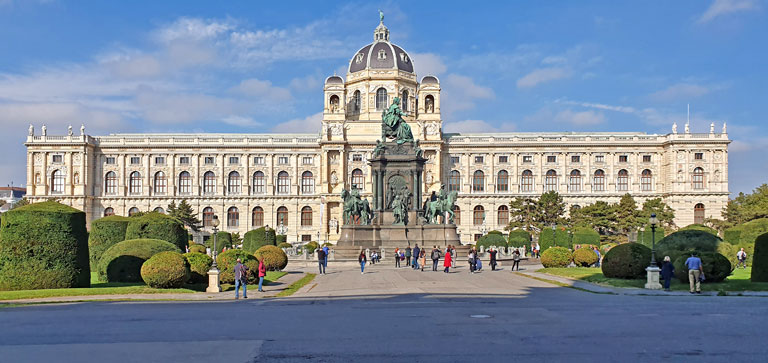
At Kunsthistorisches museum, Klimt paintings are in the form of fresco displayed twelve metres above the ground where they form an integral part of the sumptuous décor of the Main Staircase. There are 40 spandrel paintings and other decorative works adorn the narrow sections of wall between the arches and columns. Eleven of these were completed by Gustav Klimt, and the remainder by his brother Ernst and their friend, Franz Matsch. The paintings were commissioned by Emperor Franz Joseph.
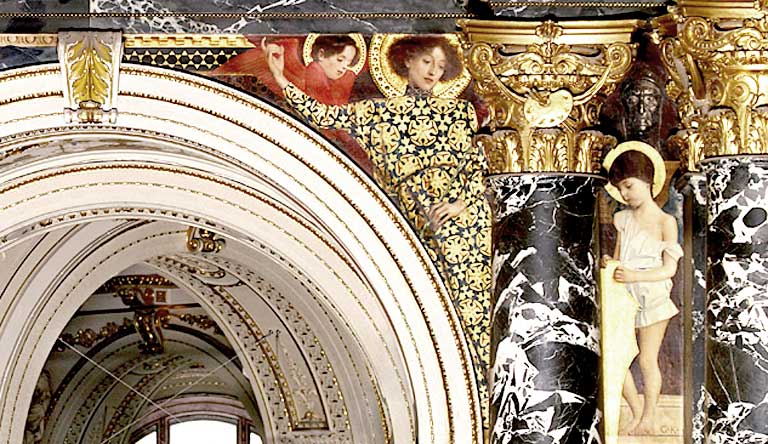
Albertina Museum

With its Graphic Arts Collection—which, at one million works spanning the period between the Renaissance and the present, Albertina is one of the world’s largest and the world’s leading museum for the art of drawing and printing.
In Albertina, there is only one painting by Klimt, entitled Nymphs (1899). Nonetheless, I enjoyed visiting here because there is a permanent exhibition of works (drawings and paintings) by all of modern and contemporary art history’s great artists including Marc Chagall, Picasso, Edgar Degas, Paul Cezanne, and Albrecht Durer. Albertina is truly the home to all of the pioneering artistic ideas of the modern era and the present.
Leopold Museum
The Leopold Museum has a remarkable number of Klimt’s works and a large room dedicated to his genius, filled with his landscapes, portraits and other paintings. Among the paintings are Litzbergkeller on Lake Attersee (1916), On Lake Attersee (1900), Death and Life (1910/11, reworked 1915), The Blind Man (1896).
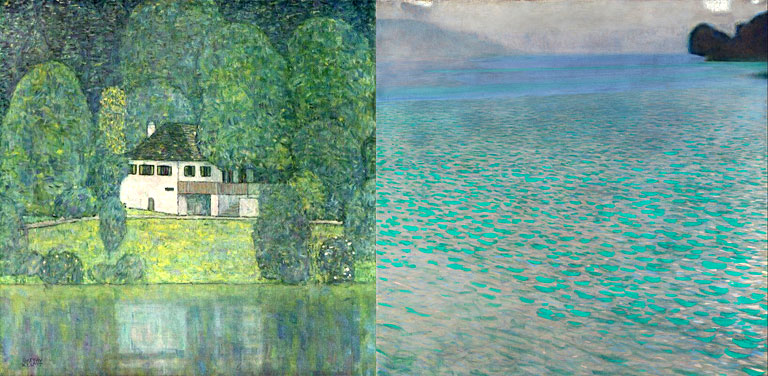
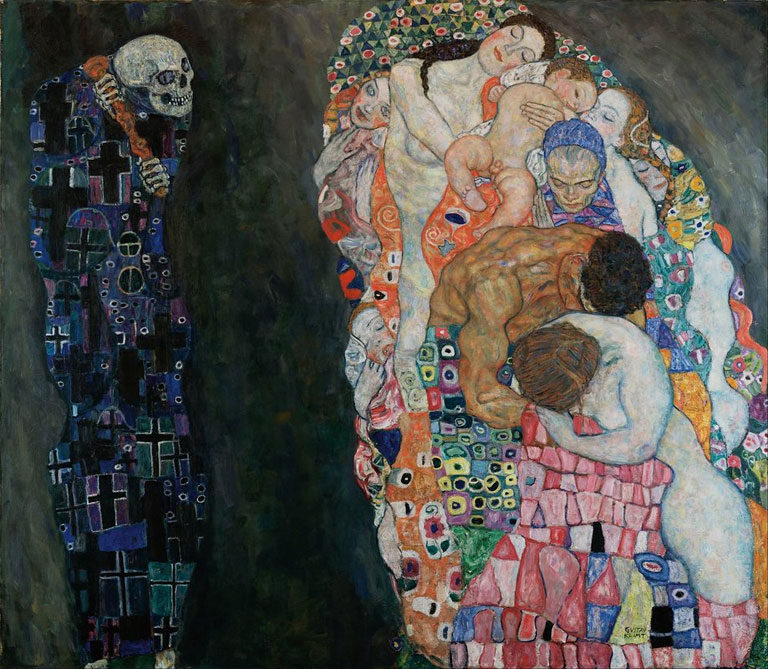
Klimt’s 1910 Death and Life is perhaps the outstanding work among many. Death and Life painting is based loosely on the dance of death depicted in medieval and renaissance times as death coming to visit people in all ranks and positions in society. Usually, death holds an hourglass or a scythe implying that everything has time to pass and be reaped off the earth. Unusually, Gustav Klimt’s Death and Life depicts death holding a club which looks much more dangerous, animalistic and menacing.
The skull of death is looking towards life eagerly, inching its neck out and head forward like a predator inspecting its prey. Life is depicted in an arrested cornucopia architecture of human bodies, like a column of flesh showing old and young, male and female alike. There is a sense of generation after generation of human beings who have been or will be taken by death.
Secession Museum
From Leopold, I walked to the Secession museum which is about fifteen minutes, and there it was his world-famous 1901 Beethoven Frieze. Klimt painted the Beethoven Frieze for the 14th Vienna Secessionist exhibition in celebration of the composer. Meant for the exhibition only, the frieze was painted directly on the walls with light materials. After the exhibition, the painting was preserved and now is on permanent display in the Vienna Secession Building in a specially built, climate-controlled basement room.
The frieze is large, standing at 7 feet high with a width of 112 feet. The entire work weighs four tons.

Upper Belvedere Museum
Under Belvedere, there are three museums, I could not go to all so I chose the one that has more Klimt paintings on exhibition—the Upper Belvedere. The Upper Belvedere gave me the opportunity to see the biggest and most important collection of Klimt’s works worldwide, among them the famous picture “The Kiss”. It was so surreal! So grand and so beautiful!
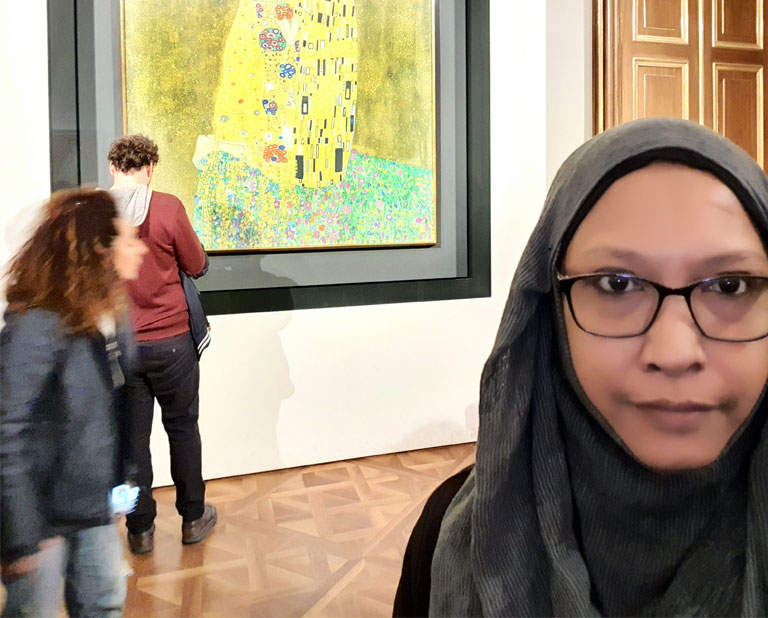
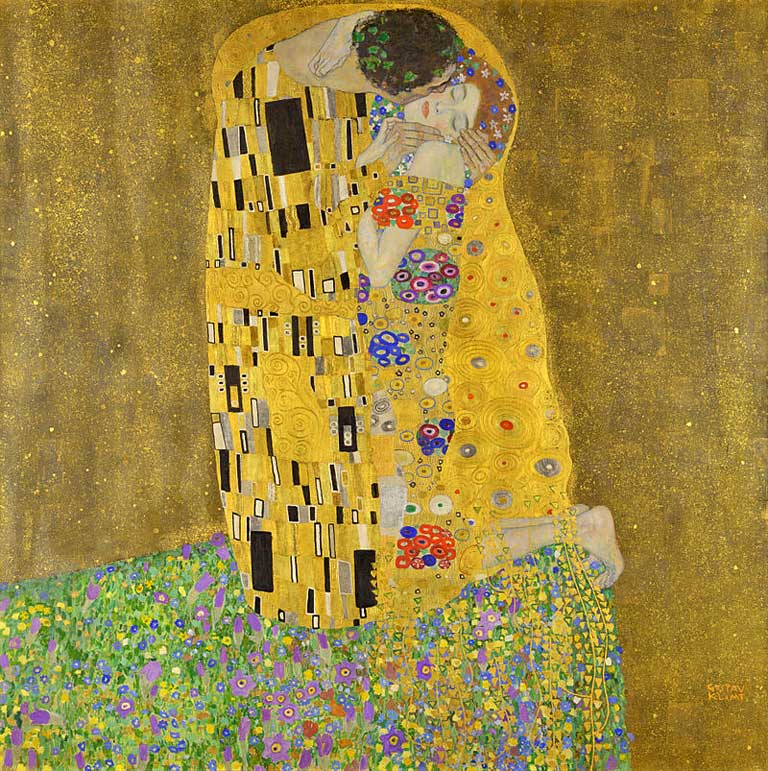
With a total of 24 works by Klimt, the Belvedere owns the biggest and most important collection of Klimt paintings in the world.
You know, I missed the Wien Museum, Klimt Villa and a few others but… I will be sure to come back again and continue where I left off. Bis später!